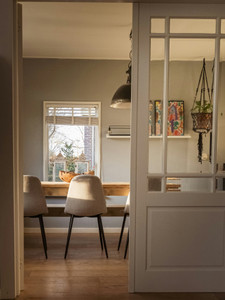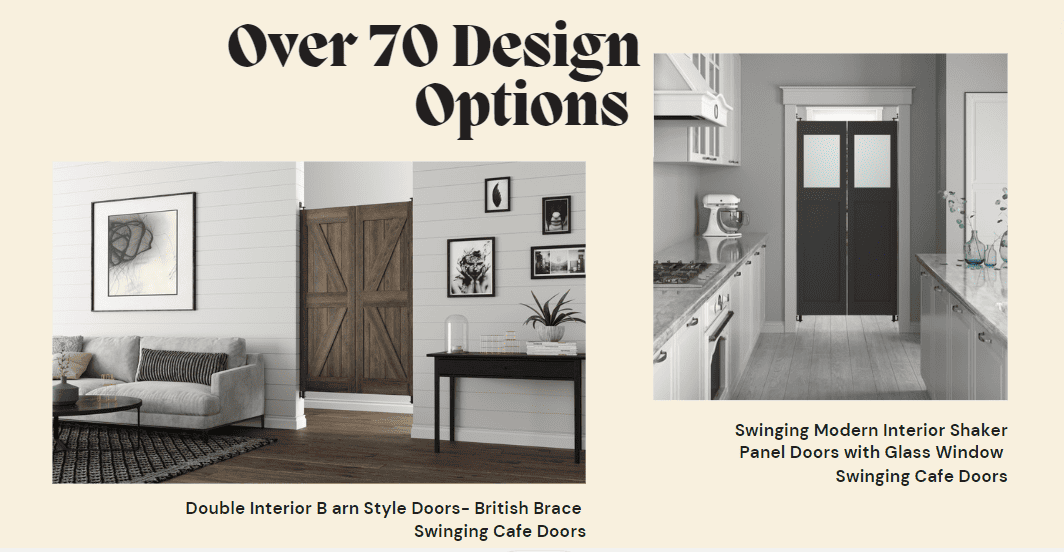
Swinging Doors for Modern Architectural Styles: The New Elegance of Entryways
Swinging Doors for Modern Architectural Styles: The New Elegance of Entryways
Regarding the home design fabric, the swinging door is a singular piece that straddles the line between functionality and aesthetic appeal. Both an artifact of old-world charm and a contemporary canvas for innovative style, the swinging door has withstood the test of time, evolving alongside architectural trends and the changing needs of homeowners. Today's discussion deep dives into the resurgence and reinvention of swinging doors within modern architectural design.
A Door to the Past: Swinging Doors in the Historical Context
To appreciate how swinging doors have found their place in modern homes, we must look back at their humble beginnings. Historically, swinging doors were crucial in dividing living spaces and managing airflow within buildings. Their design was simple yet effective, typically consisting of wood panels or slats that swung on hinges, allowing for easy passage from room to room.
With time, as Victorian, Georgian, and other period styles emerged, doors became a canvas for ornate carvings and grandeur, reflecting the era's emphasis on opulence and decoration. While traditional swinging door designs continue to inspire contemporary architects, the function and form have adapted to meet today's requirements for efficiency and space utilization.
Swinging Doors in Contemporary Homes: A Marriage of Nostalgia and Innovation
Amid sleek lines and minimalist design, the swinging door has made a quiet yet significant return. It serves as a transition point, a statement piece, and a smart space-saving solution. Designers are harnessing the versatility of swinging doors to offer greater flexibility in open-plan living, where maintaining a visual and physical boundary has never been more crucial.
From barn-style doors that slide on tracks to bi-fold doors that fold back against the wall, modern homeowners can expect to find a swinging door to suit any space. For urban lofts with limited wall space, pocket doors eliminate the need for clearance, while cafe doors provide a touch of whimsy in kitchen and dining areas. These applications not only honor the historical charm of swinging doors but also introduce them in a manner that befits contemporary sensibilities.
Functional and Aesthetic Benefits of Swinging Doors
Swinging doors are more than mere room dividers; they offer an array of functional benefits that contribute to the overall livability of a space. In terms of practicality, they provide excellent ventilation and ease of movement, particularly in areas where hands-free entry is a necessity. By swinging open and closed, they also help circulate air, a feature crucial for maintaining indoor climate control and air quality.
Their aesthetic advantages are equally compelling. Whether used to create a focal point in an open-plan interior or to infuse a touch of character into a streamlined space, swinging doors can be customized to harmonize with the overall design scheme. Materials such as sleek glass, warm wood, and industrial metals lend themselves to an endless array of styles, ensuring that each door is as unique as the space it inhabits.
Architectural Adaptation: Case Studies of Swinging Doors Re-imagined
The best testament to the versatility of swinging doors are the countless homes and spaces that have embraced them in their design. Picture a quaint countryside retreat with Dutch doors that invite the fragrance of blooming fields or a high-rise apartment boasting a bold, custom-designed pivot door for dramatic effect. These case studies not only showcase the aesthetic range of swinging doors but also illustrate how they can enhance the functionality and flow of a space.
Quite often, the decision to incorporate a swinging door is the result of a thoughtful approach to design, where every element serves a purpose. When replacing a wall with a pivot door, for example, the result is both a visual connection and the ability to demarcate the living and dining areas without creating a closed-off feel. In this way, swinging doors strike a balance that resonates with the modern homeowner's desire for both comfort and style.
Shaping the Future of Entryways: Emerging Trends and Technologies
Looking ahead, the future of swinging doors embraces innovation while remaining rooted in tradition. Emerging technologies are likely to play a more significant role in how we interact with our doors. We can anticipate advanced systems for automated door operation, improved energy efficiency in door construction, and the integration of smart home features to provide additional security and convenience.
Materials science will continue to push the boundaries of door design, offering lightweight yet durable options that push the parameters of traditional door aesthetics. Non-traditional materials, such as reclaimed wood, composite materials, and even 3D-printed elements, will introduce a new chapter in door innovation, allowing for more personalization and sustainable choices.
Swinging Doors as an Architectural Essential
Swinging doors have undeniably secured their place not only as a functional necessity in home design but also as a defining feature that sets the tone for the entire space. Their continued evolution reflects an enduring commitment to craftsmanship and utility. For those venturing into home renovations or new constructions, considering the inclusion of swinging doors is not merely a passing trend but a thoughtful nod to the historical significance and contemporary relevance they carry.
In conclusion, the swinging door is an unsung hero of the modern architectural movement, quietly influencing the way we design and inhabit our living spaces. Whether it's echoing the past in a restored colonial home or defining the future in a cutting-edge urban loft, these doors serve as a touchstone for the character, convenience, and charm every homeowner seeks.
Ready to Swing Open to New Possibilities in Home Design?
If the elegance and utility of swinging doors have piqued your interest, we encourage you to explore the myriad ways in which they can transform a space. Understanding the interplay of swinging doors with light, layout, and lifestyle is crucial, and we're here to guide you through your design journey.
For more insights into architectural trends and interior design, check out our other posts, and don't forget to share your thoughts on swinging doors in the comment section below. We'd love to hear about your favorite swinging door styles and any experiences you've had with them.

